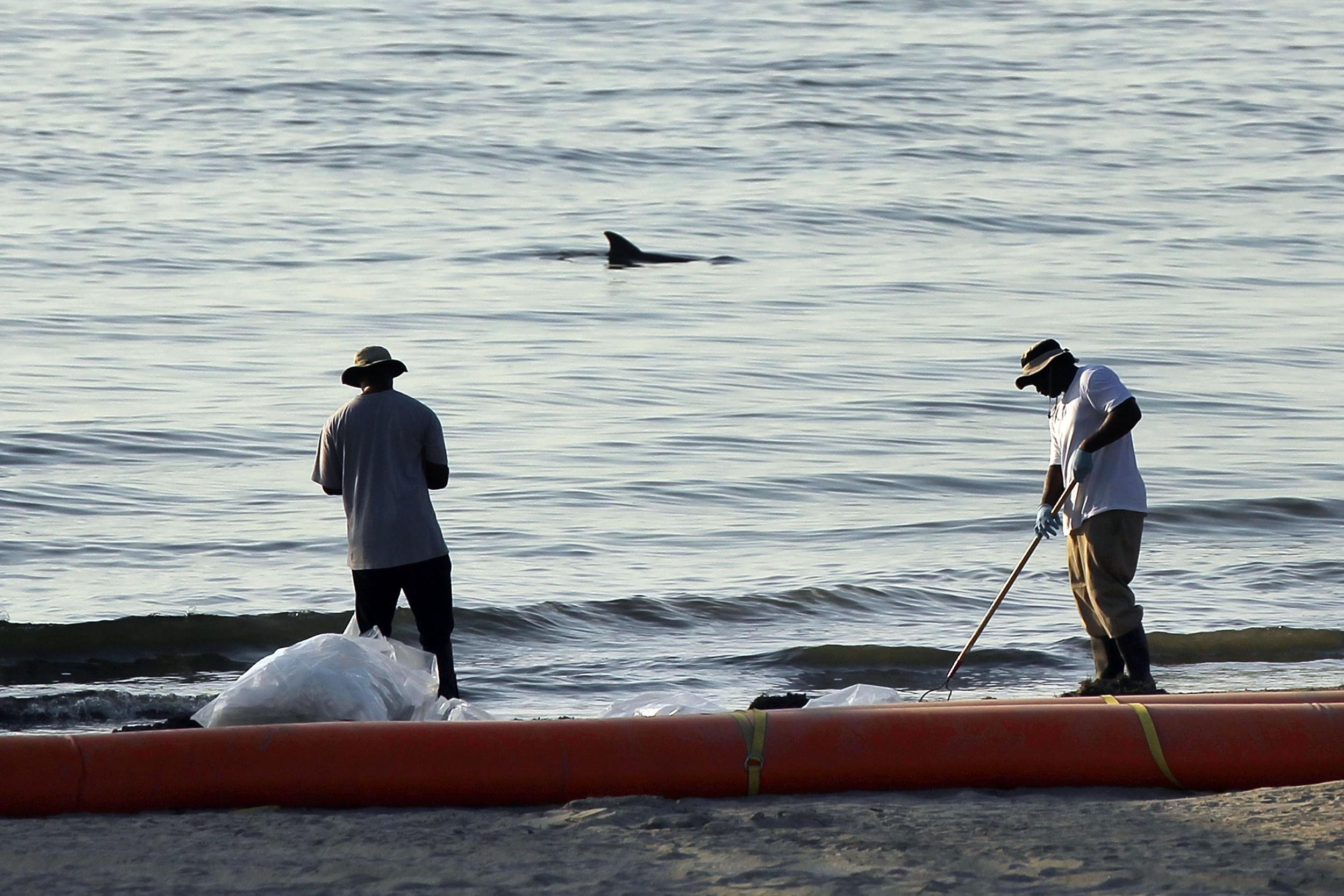Dolphins dying along Gulf Coast at triple normal rate
The 2010 BP oil spill and major flooding the Midwest are thought to be the causes

Your support helps us to tell the story
From reproductive rights to climate change to Big Tech, The Independent is on the ground when the story is developing. Whether it's investigating the financials of Elon Musk's pro-Trump PAC or producing our latest documentary, 'The A Word', which shines a light on the American women fighting for reproductive rights, we know how important it is to parse out the facts from the messaging.
At such a critical moment in US history, we need reporters on the ground. Your donation allows us to keep sending journalists to speak to both sides of the story.
The Independent is trusted by Americans across the entire political spectrum. And unlike many other quality news outlets, we choose not to lock Americans out of our reporting and analysis with paywalls. We believe quality journalism should be available to everyone, paid for by those who can afford it.
Your support makes all the difference.At least 279 dolphins have been found stranded along the Gulf Coast since February this year, three times the rate of dolphins that typically wash ashore. About 98 per cent of those dolphins have died.
Scientists from the National Oceanic and Atmosphere Administration, or NOAA, announced the alarming numbers on Friday. They are now trying to determine exactly like dolphins are dying such a high rate.
They believe that the biggest culprit is the BP oil spill of 2010, in which over 200 million gallons of oil spilled into the Gulf of Mexico over an 87 day period, and this spring’s historic flooding in the Midwest. The biggest oil spill in US history, its effects, particularly on marine wildlife, are still being felt.
More than 150 dolphins died from the spill’s direct impact, of which more than 90 per cent were bottlenose.
In its aftermath, the spill was shown to have contributed contributed to the Gulf of Mexico’s largest and longest dolphin death trend.
Long-lasting effects, including lung damage, adrenal hormone abnormalities, and general poor condition, have been traced to it.
“We do know some of the health conditions ... are improving, but some have been slow to improve,” said Teri Rowles, coordinator for NOAA Fisheries’ Marine Mammal Health and Stranding Response Program.. “Reproduction in the heaviest-oiled areas continues below normal.”
The heavy flooding of the Mississippi River is thought to have pumped more freshwater, which harms dolphins, into the Gulf, as well, though a NOAA official said freshwater exposure “doesn’t appear to be the cause of death for all animals, so that’s something we’re continuing to investigate.”
The official said chemicals and other pollutants in the river water might share some of the blame.
Of the dead dolphins washed up onto the Gulf Coast shores of Florida, Alabama, Mississippi, and Louisiana, over 70 per cent of the lifeless bodies were too decomposed to study.
Join our commenting forum
Join thought-provoking conversations, follow other Independent readers and see their replies
Comments